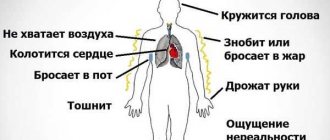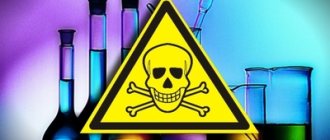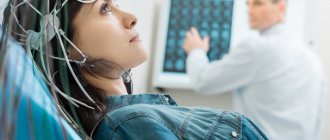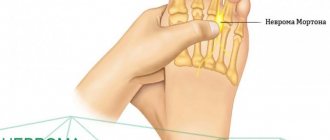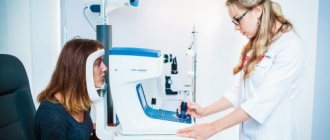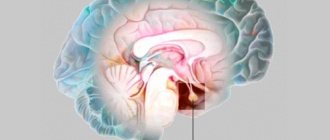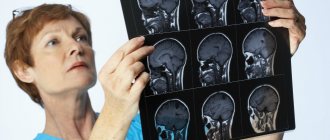Almost 30% of people around the world suffer from urinary disorders. Approximately 100 million people are diagnosed with urinary incontinence. These are all manifestations of neurogenic bladder dysfunction (NDBD). The disease is considered quite severe in terms of its impact on quality of life.
Neurogenic bladder dysfunction is a collective definition. The category of pathology includes disorders of the collecting and excretory functions. Most often they arise due to diseases of the nervous system at different levels: these can be both the cerebral cortex and inflammatory processes directly in the bladder. The main reason is deviations in the activity of the central nervous system, which is responsible for removing urine from the body.
What is neurogenic bladder in children?
In general, neurogenic bladder or NUM is a collective term. It includes a wide group of dysfunctions of the bladder (storage and evacuation), developing as a result of damage to the nervous system of the child’s body at its various levels, as well as as a result of structural lesions of the smooth muscles of the bladder and changes in the uroepithelium.
And now some anatomical and physiological details
The bladder is a hollow, pear-shaped organ located in the pelvis. This is where urine accumulates. The organ has a wide body and a narrow neck, which passes into the urethra. It contains two ureters on the right and left sides. Its smooth muscle wall is responsible for the contraction of the MP, its second name is “detrusor”. Well, one more important point, there is a “sphincter” in the cervix, which plays a big role in the whole process.
The “circulation” of urine is simple: it is formed in our kidneys, then passes through the ureters to the bladder, where it gradually accumulates. When its volume becomes sufficient, it’s time to relieve a small need. Now let’s deal with the accumulation and depletion of MP.
Accumulation
The detrusor is elastic and during the accumulation of urine, it is completely relaxed and passive. But the sphincter is securely compressed in order to block the leakage of urine from the bladder. In addition to the sphincter, the pelvic muscles are also responsible for urethral stability; they are called the pelvic diaphragm.
And two more important points: the muscles of the MP neck are equipped with α-adrenergic receptors, which, when interacting with norepinephrine (hormone), stimulate sphincter contraction. And the smooth muscle surface of the MP is equipped with β-adrenergic receptors. When they interact with the same hormone (norepinephrine), the detrusor finally relaxes and urine begins to accumulate.
Emptying
When the bladder is completely filled, we feel it and strengthen the detrusor contraction, after which the sphincter stops its pressure and the emptying of the bladder begins.
This is how MP accumulation and depletion occurs normally.
In newborns and babies in the first year of life, there is no control over emptying, since not all levels of the nervous system are fully developed, so the process occurs involuntarily. Then the child grows, and with him the capacity of the MP increases. Gradually, the baby learns to control the sphincter and involuntary urination slows down. On average, children achieve complete control over the process of urination by the age of 3, sometimes by 2.5, but after one and a half years, children feel the desire to urinate and ask to go to the potty.
Signs of urinary tract appear when the baby can already control urination, that is, from about three years of age.
Pathology develops when the nervous regulation of urination is disrupted at the spinal, peripheral or cortical level (sometimes at one, sometimes at several at once). As a result of these disorders, the functions of the sphincter and detrusor change and the person develops certain problems.
It turns out that estrogens increase the sensitivity of the receptors of the smooth muscle wall of the bladder, which is why girls are more often diagnosed with bladder cancer than boys.
What symptoms indicate this pathology?
An experienced doctor will be able to identify neurogenic bladder dysfunction in a child without any problems. Treatment at an early stage is always effective. Pathology usually manifests itself through certain urinary disorders. In this case, the severity of the disease will depend on the intensity of the deviations.
Experts have identified several symptoms that require the child to be taken to the hospital immediately:
- the baby has problems with urinary control;
- urges arise unreasonably and suddenly;
- too many urges per day. If a child runs to the toilet more than 9 times a day and cannot empty himself completely.
Symptoms may manifest themselves more clearly when the child was in a sitting position and then suddenly stood up. If it's a girl, the signs will be different. Here, the manifestations of pathology are more associated with the application of great efforts for complete emptying and a small volume of urine excreted.
Common symptoms of a neurogenic bladder include the following:
- the child’s complete lack of desire to go to the toilet throughout the day;
- the stream of urine is thin and weak;
- complaints of pain in the urinary canal;
- inability to completely empty even with additional efforts;
- a constant feeling that the bladder is enlarged due to the large volume of accumulated urine;
- uncontrolled urination.
Note! If urine does not leave the bladder in time, it will be a favorable environment for the proliferation of harmful microorganisms. They can provoke inflammation not only of the bladder or urethra, but also of the ureter or kidneys.
Signs of a neurogenic bladder in a child with organ dysfunction will be as follows:
- Postural. This means that involuntary urine discharge will be triggered by a change in body position.
- Ochoa syndrome. Here the child will suffer from infections and difficulty urinating.
- Lazy urinary. This type of symptoms is characterized by incontinence and rare urges.
- Pollakiuria. Frequent urge to go to the toilet, approximately every 25-35 minutes. There is no pain.
Causes of neurogenic dysfunction of the bladder in children
The development of LUT in children may be caused by:
- congenital anomalies in the development of central nervous system organs;
- benign or malignant vertebral tumors;
- injuries during childbirth and injuries to the nervous system;
- DCB;
- spina bifida;
- jade;
- encephalitis;
- pituitary-hypothalamic insufficiency:
- due to anomalies in the development of the coccyx and sacrum;
- dysfunction of the autonomic nervous system;
- reflex weakness that controls the emptying of the bladder.
Possible complications
Without competent therapeutic prescriptions, neurogenic bladder dysfunction in children can provoke irritability, withdrawal, and then severe mental disorders. Reflux - the penetration of urine from the bladder and ureters back into the kidneys - threatens severe intoxication.
The accumulation of extremely large amounts of urine in neurogenic urinary syndrome is a common cause of rupture. The consequence is urinary peritonitis.
Other possible complications:
- chronic pathologies in the pelvic organs;
- formation of concrements (stones);
- renal failure.
Classification in children
There are three types of neurogenic dysfunctions depending on their severity:
- Easy . The child has a syndrome of frequent visits to the toilet during the day, urinary incontinence at night, and urinary incontinence (stress).
- Medium-heavy . We are talking about lazy urinary tract syndrome (meaning large hypotonic urinary tract), rare urination and hyperreflex urinary tract.
- Heavy . The child suffers from Hinman and Ochoa syndrome.
Depending on how the bubble reflex has changed, the child may encounter a problem:
- Hyporeflex MP . This condition is characteristic of the localization of neurological disorders in the sacral region. The essence of the problem is the lengthening of the filling phase and the lack of emptying. In this case, the bladder begins to stretch to a large size; it can hold about 1.5 liters of urine. It can become infected or rise up the ureters, causing inflammation in them.
- Hyperreflex MP . This condition is directly related to pathology in the central nervous system. Urine simply cannot accumulate in the bladder, but only after entering it is released immediately. The child will often feel the urge to urinate, but in small portions.
- Areflex MP . This is a condition in which the conscious process of urination is impossible. Urine will accumulate to the maximum volume, and after that the process of urination occurs spontaneously.
How to treat
Comprehensive and thoughtful treatment of neurogenic bladder in children is necessary. It includes strict adherence to the daily routine, nutritional correction, exercise therapy, physiotherapeutic methods, and medications.
Non-drug therapy
If a child has an extremely weak bladder, then treatment measures include the following:
- Normalization of the regime and lifestyle, changing the diet. 2 hours of daytime sleep must be added to the night's rest. They increase the duration of walks and try to remove all stress factors. Excessive activity in the evening hours is kept to a minimum.
- Physiotherapy. The simplest exercises - the Arnold Kegel complex - strengthen the pelvic floor muscles, namely supporting the bladder. You can do gymnastics while sitting, standing, or lying down. The muscles are tensed, held in this state for about 10 seconds, and relaxed. 15 repetitions 3 times a day are enough for children.
- Physiotherapy. The main indication for it is UDMP - neurogenic urinary dysfunction. Paraffin baths, ultrasound therapy, and electrophoresis are used (for a hyperreflex bladder, Atropine is used as a medicine, for a hyporeflex bladder, Proserin is used).
- Family psychotherapy sessions, treatment of psychogenic disorders by listening to classical music.
Signs of NPM in children
Neurogenic bladder dysfunction in children is manifested by multilateral urination disorders. Their severity depends on the severity of the disease against which they arose.
Hyperactive or hyperreflexive MP manifests itself:
- frequent acts of urination (sometimes more than 7 times in 24 hours);
- imperative (urgent and sudden) urge to relieve oneself, forcing the child to run to the toilet in an emergency (this is a particular problem for students at school);
- a meager volume of urine excreted.
It is impossible to accumulate sufficient volume in this condition. We have already written in more detail about how to treat overactive bladder in children in a separate article.
Hypotonic or hyporeflex MP manifests itself:
- rare acts of urination (1-3 times every 24 hours);
- sluggish flow of urine;
- a significant volume of urine released during bladder emptying (up to 1.5 liters);
- a feeling of an incompletely emptied bladder, and studies show that after emptying, up to 400 mg of residual urine can remain in the bladder.
Daytime urinary syndrome occurs:
- sudden and frequent (every 15-20 minutes) urge to urinate;
- painless act of urination;
- These symptoms may last from 2 days to 2 months and then disappear on their own.
- Stress urinary incontinence usually affects girls of puberty. The disorder is manifested by the uncontrolled release of urine in small portions during physical activity. The same thing can happen when laughing. Strong laughter can cause involuntary leakage of urine and even complete emptying of the bladder.
- A lazy bladder is characterized by a combination of rare acts of emptying the bladder with urinary incontinence, as well as infectious lesions of the urinary system and constipation.
- Postural urinary tract means that uncontrolled bowel movements occur during the day, after a change in body position from horizontal to vertical. At night, urination is normal.
- Boys are more likely to suffer from nocturnal enuresis Uncontrolled emptying of the bladder occurs during sleep.
Hinman syndrome is a severe variant of detrusor-sphincter dysfunction:
- inability to hold urine at any time of the day;
- chronic form of constipation;
- relapses of infectious diseases of the urinary system;
- uncontrolled acts of defecation;
- impossibility of reconstructive surgery;
- absence of urinary tract abnormalities and neurological pathology;
- Family psychotherapy for a child often improves urodynamics.
Aocha syndrome (another name for urofacial syndrome) . This condition is characterized by a change in the child’s facial expression, reminiscent of crying or screaming.
- There is a hereditary predisposition;
- The development of the disease is observed more often in boys, from three months to 16 years;
- Children suffer from uncontrolled urination during the day and/or at night, infectious diseases of the urinary system and constipation;
- Complications may develop in the form of chronic kidney disease and symptomatic arterial hypertension.
A disruption in the supply of nerve cells to an organ and its tissues, regardless of its level, will sooner or later lead to a significant disruption in the nutrition of the organ, which will give rise to the development of serious complications, including shrinkage of the bladder and chronic kidney problems.
Why does a child develop this pathology at an early age?
The neurogenic bladder in children and its symptoms are associated with 2 functions, evacuation and reserve. Based on statistics, more than 10% of children of different ages living in the CIS countries suffer from pathology. It is very important to pay attention to the deviation in a timely manner, as it can gradually provoke the occurrence of other diseases of the genitourinary system.
It will not be possible to diagnose the pathology earlier than at the age of 3-4 years, since only starting from this period are children able to completely control urination.
Information for parents! Instilling neatness skills in a child is not enough. It is necessary to monitor the full level of development of the brain, namely the subcortical and cortical centers. They are responsible for controlling this function.
To decide how to treat a neurogenic bladder in a child, you need to familiarize yourself with the causes of the deviation. They may be as follows:
- Injury received during childbirth.
- Congenital defects.
- HIV.
- Problems with the functionality of the pituitary gland and hypothalamus.
- Cerebral palsy.
- Hernia.
- Diabetes.
- Stroke.
- Brain injuries, as well as injuries affecting the sacral spine.
- Hernias and neoplasms of the spinal cord.
- Damage to the nervous system from the regulatory side.
- Hormonal imbalance.
If a child receives many injuries at an early age, gets a strain on the bladder muscles, and also if he has inflammatory processes in the ureters, malignant or benign tumors, this can also lead to a neurogenic bladder in the child. Treatment in this case will be difficult.
Most often, the disease affects girls, since their hormones have a different, more sensitive effect on the organ’s receptors. It is also worth paying attention to the fact that school-age children against this background cannot control their emotions, as a result they develop nervousness and depression.
Diagnostics
Children with suspected NUT require a comprehensive examination. The diagnostic process begins with studying the complaints of the pediatric patient and his parents and collecting an anamnesis. Then, based on the information received and the assumption of a possible diagnosis, the doctor will prescribe laboratory and instrumental tests.
The following laboratory tests are usually indicated::
- general blood and urine analysis;
- blood chemistry;
- culture of urine for microflora to identify the type of bacteria;
- urine analysis according to Nechiporenko and Zimnitsky.
As instrumental diagnostics are prescribed:
- urethrocystography;
- Ultrasound of the bladder with identification of the volume of residual urine;
- radiography of the urinary system;
- abdominal radiography;
- retrograde pyelography;
- MRI and CT examination;
- radiological examination of the kidneys - scintigraphy;
- urethro- and cystoscopy;
- examination of the obturator apparatus of the rectum or sphincterometry;
- electromyography;
- urethral profilometry.
The attending physician will also need to consult with a nephrologist, urologist, neurologist and psychologist.
In addition to all the above tests, it is necessary to clarify the volume and number of daily acts of bladder emptying with time registration. In this case, it is necessary to create a comfortable temperature in the room and a comfortable drinking regime.
If the doctor suspects an organic pathology of the central nervous system, then the child will have to undergo:
- X-ray of the skull;
- electroencephalography;
- radiography of the spine;
- echoencephalography;
- MRI or CT examination of the spinal cord and brain.
General information
Neurogenic bladder in children is a reservoir and evacuation bladder dysfunction caused by a violation of the nervous regulation of urination at the central or peripheral level. The relevance of the problem of neurogenic bladder in pediatrics and pediatric urology is due to the high prevalence of the disease in childhood (about 10%) and the risk of developing secondary changes in the urinary organs.
A mature, fully controlled day and night urination pattern is formed in a child by the age of 3-4 years, progressing from an unconditioned spinal reflex to a complex voluntary reflex act. Cortical and subcortical centers of the brain, centers of spinal innervation of the lumbosacral spinal cord, and peripheral nerve plexuses take part in its regulation. Disruption of innervation in a neurogenic bladder in children is accompanied by disorders of its reservoir-evacuation function and can cause the development of vesicoureteral reflux, megaureter, hydronephrosis, cystitis, pyelonephritis, and chronic renal failure. A neurogenic bladder significantly reduces the quality of life, creates physical and psychological discomfort and social maladaptation of the child.
Treatment of neurogenic bladder dysfunction in children
According to the treatment protocol, children with a similar diagnosis are prescribed complex treatment, including:
- Non-medicinal;
- Medication;
- Surgical methods.
This is a gentle therapeutic method with virtually no side effects. It can be combined with other therapies.
Non-drug therapy
The basis of the method:
- Compliance with a protective regime, including a full night's sleep and additional sleep during the day (1-2 hours). Before going to bed, active games and factors that can traumatize the child’s psyche should be completely excluded.
- Regular walks in the fresh air.
- Monitoring compliance with the urination regime established in advance, with a gradual increase in the interval between bladder emptying.
- Regularly performing a set of Kegel exercises to strengthen the pelvic muscles.
- Physiotherapeutic procedures. Typically, laser and ultrasound therapy, procedures with medicinal electrophoresis, hyperbaric oxygenation, heat treatment, and electrical stimulation of the MP are prescribed.
- Psychotherapeutic sessions.
Treatment with folk remedies
As an auxiliary therapy, you can use folk remedies after consulting your doctor. Medications help reduce infections.
A good effect is achieved by using decoctions of lingonberry leaves, which have an antiseptic and diuretic effect. Recipes with sage, rose hips or freshly squeezed carrot juice will also help fight the disease.
Neurogenic bladder in children, treatment with drugs
Drugs are prescribed depending on the type of neurogenic MP disorder. Usually the course of treatment ranges from 1 month to 1.5, after the same time the next course is taken.
If a child is prescribed too many medications, it is not recommended to take them at the same time. They should be prescribed sequentially.
Drug treatment of NMP is carried out using combinations:
- anticholinergics (atropine, oxybutynin, detrusitol, propiverine, ubretide);
- inhibitors of prostaglandin synthesis (indomethacin, flurbiprofen);
- tricyclic antidepressants;
- nootropic drugs (picamilon, pantogam);
- cholinomimetics (aceclidine, galantamine, distigmine bromide);
- herbal remedies (peony root, valerian, motherwort);
- desmopressin;
- amino acids (glycine, glutamic acid);
- vitamins B, PP, A, E (tablets or injections);
- adaptogens (ginseng extract, eleutherococcus, lemongrass);
- calcium antagonists;
- immune correctors (levamisole).
The doctor may prescribe injections of capsaicin, botulinum toxin or resinferatoxin in order to reduce the tone of the bladder wall.
If, with hypotonic bladder, a large volume of residual urine is detected, the child will require periodic catheterization.
To combat urinary tract infections, broad-spectrum antibiotics are prescribed. Drugs of the cephalosporin group, uroseptics or herbal preparations such as trinephron or canephron can be used.
To prevent recurrence of the infection, once its acute manifestations have subsided, maintenance therapy with the same means is prescribed, but in small doses. The course is from 30 to 45 days.
Surgery
Surgical intervention is recommended if there is no effect from conservative therapy, or if there are organic reasons that caused the disease.
Operations are performed using endoscopic methods.
Interventions are generally limited:
- transurethral resection of the bladder neck;
- implantation of collagen into the ureter (at its mouth);
- manipulation of the ganglia, which are involved in regulating urination.
In some cases, the doctor may recommend surgery to increase the volume of the bladder.
Prognosis and prevention
An unpleasant neurogenic disease diagnosed on time and adequately treated is an almost one hundred percent guarantee of a favorable outcome. Timely prevention of neurological pathologies and diseases of the genitourinary system, especially in girls, will protect the child from relapse of a dangerous condition.
Neurogenic bladder is a serious disease. Such patients are registered, which means that constant examinations will become the norm. Parents are required to monitor urination patterns, undergo tests quarterly, and annually bring their child for an ultrasound of the urinary tract.

